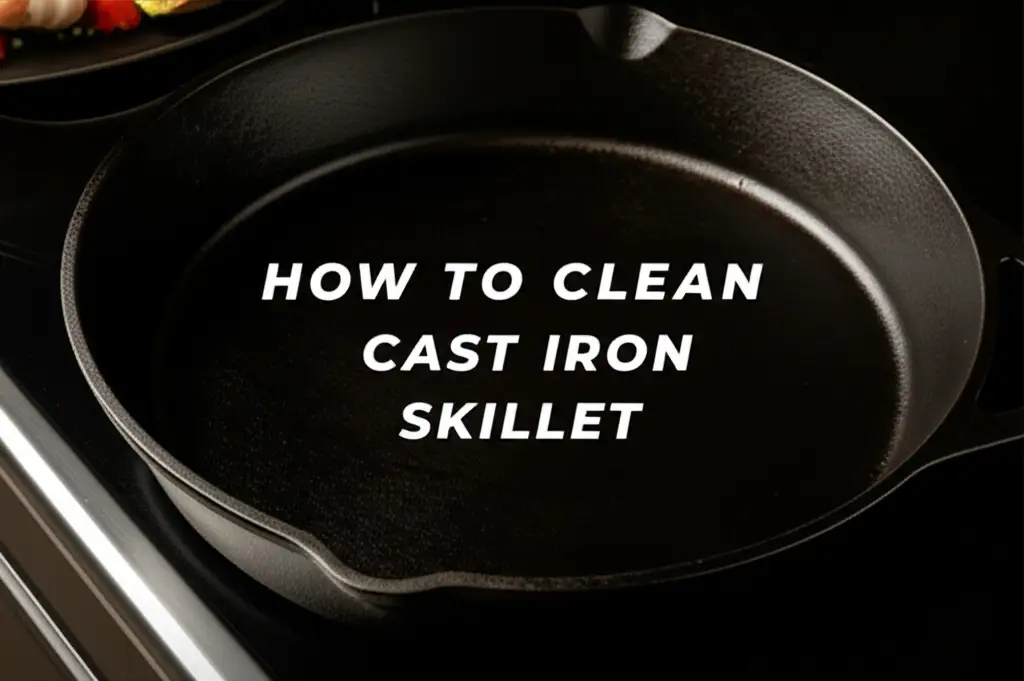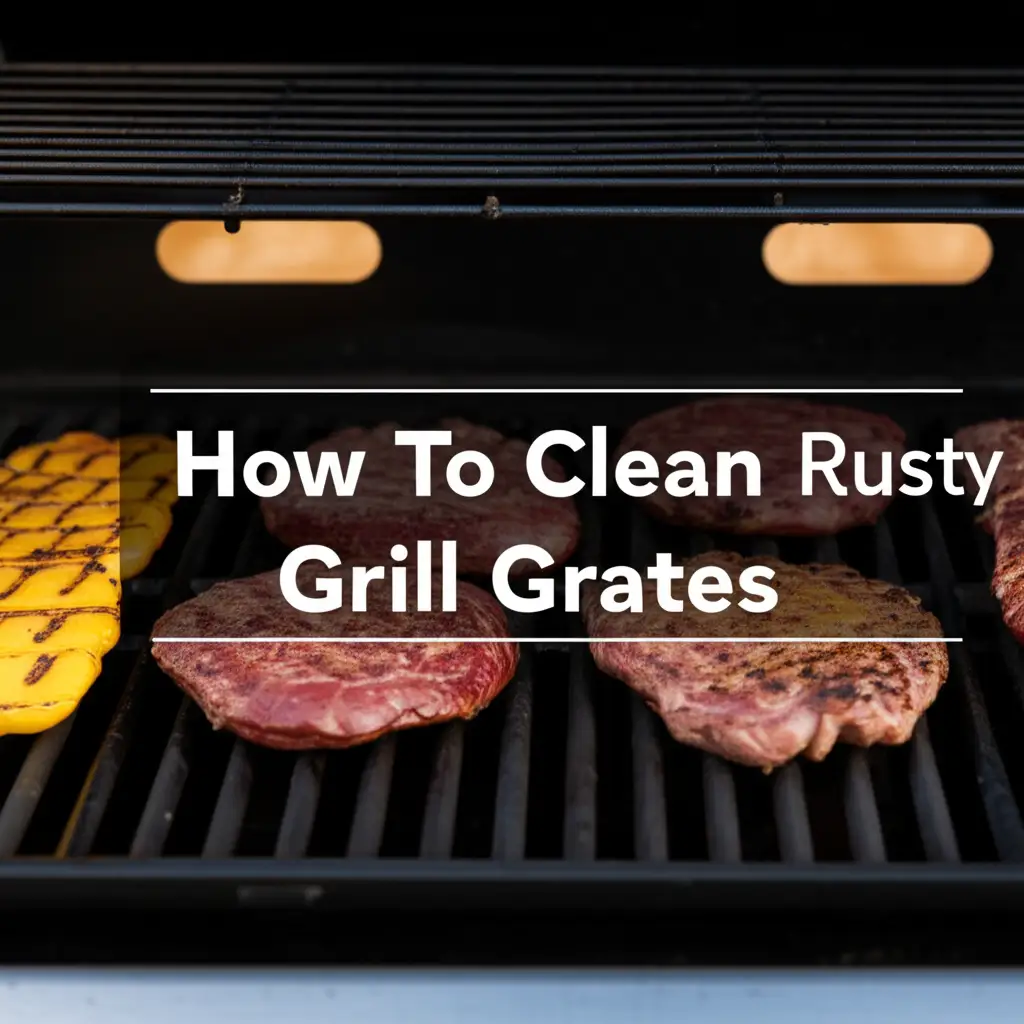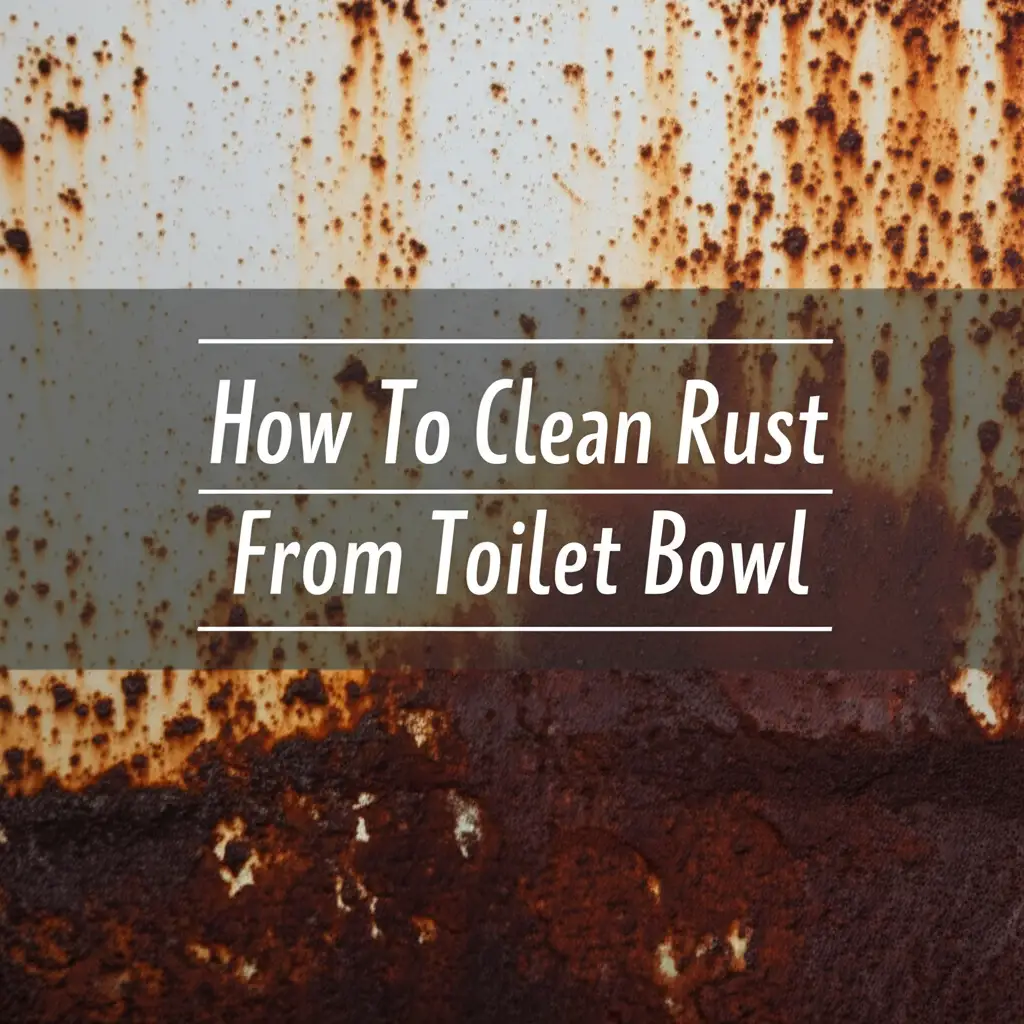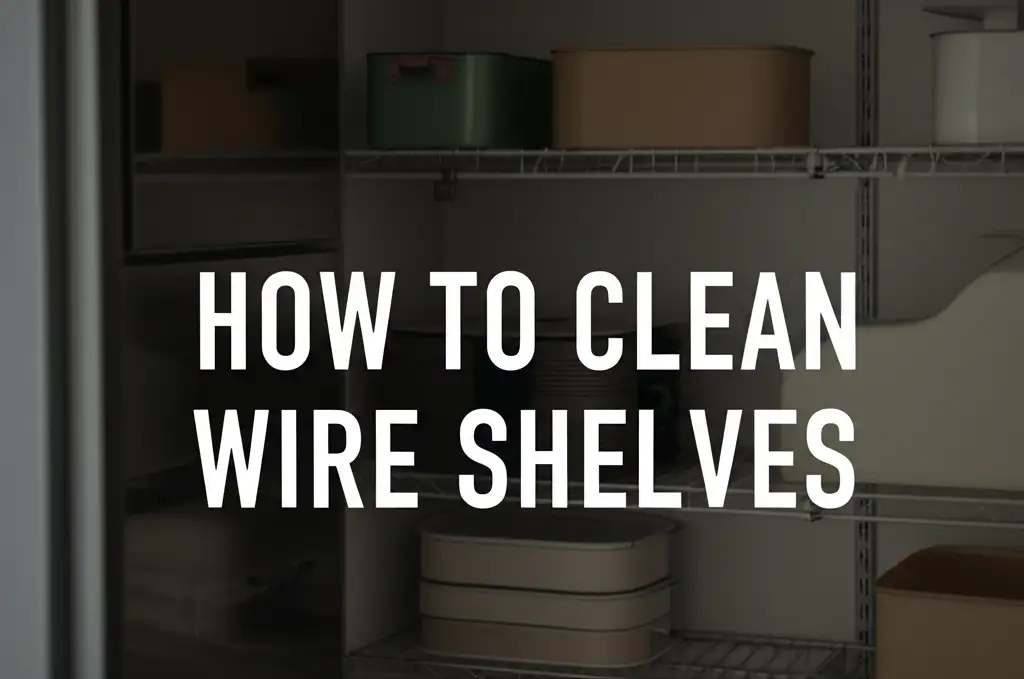· Home Cleaning · 16 min read
How To Clean Cast Iron Skillet

Mastering Cast Iron Cleaning: How To Clean Cast Iron Skillet Properly
Owning a cast iron skillet is like having a reliable friend in the kitchen. It cooks food evenly, lasts a lifetime, and often gets better with age. However, many people feel unsure about how to clean cast iron skillet. They worry about ruining its valuable seasoning or causing rust. This article helps you understand the right way to care for your skillet.
We will explore effective cleaning methods, from daily washes to deep cleaning techniques. You will learn how to handle common issues like stubborn food and rust. We will also discuss the vital step of re-seasoning. By the end, you will feel confident keeping your cast iron skillet in top condition. Let’s make sure your skillet serves you well for many years.
Takeaway
- Clean your cast iron skillet immediately after use.
- Avoid harsh soaps and abrasive scrubbers for daily cleaning.
- Use warm water and a stiff brush for most cleaning needs.
- Address stuck-on food or rust quickly to prevent damage.
- Always dry your skillet thoroughly and apply a thin layer of oil after cleaning.
- Re-season your skillet if you perform a deep clean or notice dullness.
How do you clean a cast iron skillet?
Clean a cast iron skillet by scrubbing it with warm water and a stiff brush or scraper, avoiding harsh soap when possible. Rinse it thoroughly, dry it completely, and then apply a thin layer of cooking oil. This process protects the seasoning and prevents rust, ensuring the skillet performs well.
Understanding Your Cast Iron Skillet: Why Cleaning Matters
Your cast iron skillet is unique among cookware. It has a natural, non-stick surface called seasoning. This seasoning is a layer of polymerized oil baked onto the iron. It gives your food flavor and makes cleaning easier. Proper cleaning protects this seasoning. Incorrect cleaning can strip it away, making food stick and leading to rust.
Many people think you cannot use water or any soap on cast iron. This is a myth. You can use water, and sometimes mild soap is fine. The key is to avoid harsh detergents and abrasive tools that remove the seasoning. Water helps remove food particles. Soap breaks down grease, but too much strips the oil.
Cleaning prevents food buildup. Old food can become rancid and affect the taste of your next meal. Regular cleaning also stops rust. Cast iron is iron, and iron rusts when exposed to moisture. A well-maintained, clean, and seasoned skillet will resist rust. It will serve you for decades, improving with every use.
Keeping your skillet clean extends its lifespan. It also ensures consistent cooking performance. A clean, smooth surface cooks food more evenly. A well-cared-for skillet becomes an heirloom. It passes down through generations, telling a story of countless delicious meals. I find that a little effort after each use saves a lot of trouble later.
Basic Daily Cleaning: The Gentle Approach
After cooking, your cast iron skillet needs immediate attention. Cleaning it while it is still warm is often easiest. The warmth helps release food particles. Avoid cleaning a hot skillet under cold water. The sudden temperature change can crack the iron. Let it cool slightly before you begin.
Start by scraping any loose food bits into the trash. Use a spatula or a pan scraper for this. Then, take your skillet to the sink. Use warm water and a stiff nylon brush or a plastic scraper. Gently scrub the inside and outside of the skillet. Most food comes off easily with this method.
Sometimes, you might have some grease or minor stuck-on bits. A small amount of mild dish soap can help. Apply a tiny drop to your brush. Scrub the area gently. Rinse the skillet thoroughly under warm water. It is important to rinse all the soap away completely. Soap residue can affect your seasoning.
After washing, immediate and thorough drying is crucial. Water is cast iron’s enemy when left to sit. Use a towel to dry the skillet completely. For extra measure, place the skillet on a burner over low heat for a few minutes. This ensures all moisture evaporates. Finally, apply a very thin layer of cooking oil to the entire surface, inside and out, with a paper towel. This protects the seasoning and prepares the skillet for its next use. It feels good to see it gleaming clean.
Tackling Stuck-On Food: Simple Solutions
Sometimes, food really sticks to your cast iron skillet. This can happen if the seasoning is thin or if you cook at very high heat. Do not despair; there are simple ways to clean stuck-on cast iron. You do not need harsh chemicals or extreme scrubbing. Your goal is to remove the food without damaging the seasoning.
One effective method uses salt. Pour a generous amount of coarse salt, like kosher salt, into the skillet. Add a small amount of warm water, just enough to make a paste. Use a stiff brush or a paper towel to scrub the stuck-on food with the salt paste. The salt acts as a gentle abrasive. It helps dislodge the food without scratching the iron. After scrubbing, rinse the skillet thoroughly under warm water. Make sure no salt crystals remain.
Another method involves boiling water. If you have particularly stubborn bits, fill the skillet with about an inch of water. Bring the water to a boil on the stove. Let it boil for a few minutes. Use a wooden spoon or spatula to scrape at the stuck-on areas while the water boils. The boiling water softens the food, making it easier to remove. After the water cools slightly, pour it out. Then, use your brush to finish cleaning.
For tough crud that refuses to budge, consider a specialized tool. A chainmail scrubber is excellent for this task. It provides strong abrasive action without harming the seasoning layer. Gently scrub the problem areas with warm water and the chainmail. It lifts away even the most persistent food residue. Remember to always dry and oil your skillet immediately after any of these cleaning methods. This helps maintain its protective layer. For more specific issues, learning how to clean crud off a cast iron skillet is a good next step.
Dealing with Burnt-On Residue: Restoring Your Skillet
Burnt food in your cast iron skillet can seem like a major problem. It looks intimidating, but it is often fixable. Burnt residue occurs when food sugars caramelize or protein sticks intensely to the cooking surface. You need a method that removes the carbonized layer without stripping all your hard-earned seasoning. This process might take a bit more effort than daily cleaning, but it is worth it.
One common way to handle burnt-on residue is to use a metal spatula or scraper. While the skillet is still warm, carefully scrape at the burnt areas. Apply firm pressure, but be mindful not to dig into the metal. The goal is to lift the carbonized layer. You might hear some scraping sounds, which is normal. This method is effective for loosening thick layers of burnt food.
For more stubborn burnt-on patches, try heating the skillet again. Place the skillet on the stove over medium-low heat. Add a small amount of water to cover the burnt area. Let the water heat up. As it warms, use a wooden or metal spatula to gently scrape the softened burnt residue. The heat helps to loosen the bond between the food and the iron. Be patient with this process. It might take a few minutes for the residue to soften enough.
After you have scraped away as much as possible, use a stiff brush or a chainmail scrubber with warm water. Scrub the remaining residue. If necessary, a small amount of mild soap can help break down the burnt oils. Rinse the skillet thoroughly. Then, make sure to dry it completely and apply a fresh layer of oil. This re-seals the surface. Sometimes, you may need to re-season the pan if much of the burnt layer comes off. For detailed guidance on completely removing baked-on residue, learning how to clean burnt cast iron can provide more in-depth techniques.
Removing Rust: Bringing Your Skillet Back to Life
Finding rust on your cast iron skillet can be disheartening. Rust forms when moisture is left on the iron for too long. It looks red or orange and feels rough. Do not worry, a rusty skillet is not ruined. You can often restore it to its former glory. This process requires a bit more effort than routine cleaning, but it is entirely manageable.
For light rust, a simple scrub with a steel wool pad can work wonders. Use fine steel wool (like 000 or 0000 grade) with a small amount of cooking oil. Vigorously scrub the rusted areas. The oil helps to lubricate the steel wool, making it less abrasive on the underlying iron while helping to lift the rust. Continue scrubbing until the rust is gone and the metal looks gray. Rinse the skillet well to remove all rust particles and steel wool fibers.
For more significant rust, you might need a stronger approach. White vinegar is excellent for rust removal. Fill a tub or sink with equal parts white vinegar and water. Submerge the rusty skillet completely. Let it soak for a short period, about one to three hours. Check it periodically. If you leave it too long, the vinegar can start to eat into the actual iron, making it dull. The vinegar’s acidity dissolves the rust.
After soaking, remove the skillet from the vinegar solution. Use a stiff brush, scrubber, or steel wool to scrub off the softened rust. It should come off much more easily now. Rinse the skillet thoroughly under clean water. It is vital to rinse off all vinegar residue. Immediately dry the skillet completely to prevent new rust from forming. After any rust removal, you must re-season your skillet. This step is critical to protect the newly exposed iron. Understanding how to clean rust from cast iron in detail can help with more severe cases.
The Importance of Seasoning After Cleaning
Seasoning is the heart and soul of your cast iron skillet. It is what makes it non-stick and protects it from rust. Every time you clean your skillet, especially if you use soap or tackle tough messes, you affect the seasoning layer. Therefore, understanding how to re-season is just as important as knowing how to clean. A well-seasoned pan ensures food does not stick and improves cooking performance.
After every cleaning, particularly after a deep clean or rust removal, you must apply a thin layer of oil. This process is part of maintaining your seasoning. Take a paper towel and apply about a teaspoon of high smoke point oil. Good choices include grapeseed oil, flaxseed oil, or vegetable oil. Rub the oil over the entire surface of the skillet, inside and out. Then, use a clean paper towel to wipe off as much oil as you can. The goal is to leave an almost invisible layer. Too much oil will result in a sticky, gummy finish.
For a full re-seasoning, which is necessary after rust removal or if your pan feels dull and sticky, you bake the oiled skillet. Preheat your oven to 450-500°F (230-260°C). Place the oiled skillet upside down on the middle rack. Put a baking sheet or aluminum foil on the rack below to catch any drips. Bake for one hour. After one hour, turn off the oven and let the skillet cool inside the oven. This slow cooling helps the oil polymerize evenly.
You may need to repeat this baking process several times, especially after rust removal. Each layer adds to the pan’s durability and non-stick properties. A fully seasoned pan will have a dark, glossy, and smooth surface. This protective layer is crucial for preventing future issues. It ensures your skillet remains a joy to use. Learning how to clean stuck-on cast iron often leads to re-seasoning as well.
Common Cast Iron Cleaning Mistakes to Avoid
Many mistakes can damage your cast iron skillet’s seasoning or lead to rust. Avoiding these common pitfalls helps your skillet last longer. Knowing what not to do is as important as knowing what to do. I have seen many good pans ruined by simple errors.
First, never put your cast iron skillet in the dishwasher. Dishwasher detergents are too harsh. They strip away the seasoning layer completely. The high heat and strong chemicals will leave your skillet bare and prone to rust. Always wash your cast iron by hand.
Second, do not let your skillet air dry. Water causes rust quickly on bare or poorly seasoned cast iron. After washing, always dry it immediately and thoroughly with a towel. Then, place it on the stove over low heat for a few minutes. This ensures all moisture evaporates, preventing any rust spots from forming.
Third, avoid harsh abrasive cleaners like steel wool pads (unless removing rust) or scouring powders for routine cleaning. These can scratch away the seasoning. Use a stiff nylon brush, a plastic scraper, or a chainmail scrubber for daily cleaning. Save the steel wool for specific restoration tasks.
Fourth, do not use excessive amounts of soap, especially strong dish soaps. A tiny drop of mild soap is fine for greasy messes. However, too much soap can strip away the pan’s protective oil layer. When in doubt, stick to hot water and a brush.
Finally, never store your cast iron skillet with any moisture on it. Even a small amount of condensation can lead to rust. Store it in a dry place. You can place a paper towel inside if you live in a humid environment. This absorbs any residual moisture. By avoiding these common mistakes, you ensure your skillet stays in prime condition for years of cooking enjoyment.
Advanced Cleaning: Stripping and Re-seasoning for Restoration
Sometimes, a cast iron skillet needs a complete overhaul. This is necessary if it has deep rust, a sticky gummy residue from poor seasoning, or thick layers of baked-on crud. Stripping a cast iron skillet means removing all existing seasoning and rust. This brings the pan back to bare metal. It is a big step, but it can revive an old or neglected skillet.
One common method for stripping involves using a self-cleaning oven cycle. Place the cold skillet in your oven. Run the self-cleaning cycle according to your oven’s instructions. The high heat turns all rust and old seasoning into ash. Be aware that this process can create a lot of smoke and smell. Ensure your kitchen is well-ventilated. After the cycle finishes and the oven cools, carefully remove the skillet. It will be gray and covered in ash. Scrub the ash away with a stiff brush and water.
Another method for stripping uses lye or oven cleaner. Wear heavy-duty gloves and eye protection. Apply a thick layer of lye-based oven cleaner to the skillet, focusing on all surfaces. Place the skillet in a sealed plastic bag. Let it sit for several hours or overnight. The lye will dissolve old seasoning and rust. After soaking, remove the skillet from the bag. Scrape off the softened residue with a plastic scraper. Wash the skillet thoroughly with soap and water to neutralize the lye. Rinse it many times until it feels clean and no residue remains.
After stripping, your skillet will be bare gray metal. It is now highly vulnerable to rust. You must immediately re-season it. Apply multiple thin layers of oil, baking each layer in the oven as described in the seasoning section. Aim for at least three to five coats for a good start. This complete re-seasoning creates a fresh, durable, non-stick surface. It transforms a neglected skillet into a prized cooking tool once more.
FAQ Section
1. Can I use dish soap on cast iron? Yes, you can use a small amount of mild dish soap on cast iron. Modern dish soaps are less harsh than older formulations. A tiny drop helps break down grease and food residue. Always rinse thoroughly afterward. Using too much soap or harsh detergents can strip the seasoning over time, but occasional use is generally fine.
2. How do I remove rust from my cast iron skillet? To remove rust, scrub the affected areas with steel wool and cooking oil for light rust. For heavier rust, soak the skillet in a 50/50 white vinegar and water solution for 1-3 hours. After soaking, scrub the rust away. Always re-season the skillet immediately after rust removal to prevent new rust.
3. What should I do if food sticks to my cast iron after cleaning? If food sticks, your seasoning might be compromised or insufficient. Re-season your skillet by applying a thin layer of cooking oil and baking it in a 450-500°F oven for one hour. Repeat this process several times. For quick fixes, use a bit more oil when cooking, and avoid high heat initially.
4. How often should I season my cast iron skillet? You should apply a thin layer of oil after every wash to maintain seasoning. A full re-seasoning (baking in the oven) is necessary after deep cleaning, rust removal, or if the surface appears dull, sticky, or food starts to stick consistently. The frequency depends on use and cleaning methods.
5. Can I put my cast iron skillet in the dishwasher? No, never put your cast iron skillet in the dishwasher. The harsh detergents and high heat in a dishwasher will strip away the seasoning. This leaves your skillet exposed, rough, and highly prone to rust. Always hand-wash cast iron to preserve its valuable seasoning.
6. What kind of oil should I use for seasoning? For seasoning, use a high smoke point oil like grapeseed oil, flaxseed oil, vegetable oil, or canola oil. Avoid olive oil or butter, as they have lower smoke points and can become sticky. A thin layer is key; too much oil creates a gummy surface.
Conclusion
Caring for your cast iron skillet is a rewarding process. Understanding how to clean cast iron skillet properly ensures its longevity and performance. We have covered daily cleaning routines, tackling stubborn food, removing rust, and the vital step of seasoning. Remember, your cast iron is not fragile; it is durable and forgiving.
The key takeaways are consistent, gentle cleaning, immediate drying, and proper re-oiling. Avoid common pitfalls like dishwashers and harsh chemicals. With these steps, your skillet will develop a beautiful, non-stick patina that improves with every use. A well-maintained cast iron skillet becomes more than just cookware; it becomes a cherished item that serves you for generations. Keep cooking, keep cleaning, and enjoy the lasting legacy of your cast iron.
- cast iron cleaning
- cast iron care
- skillet maintenance
- seasoning cast iron
- rust removal




